Full text
PDF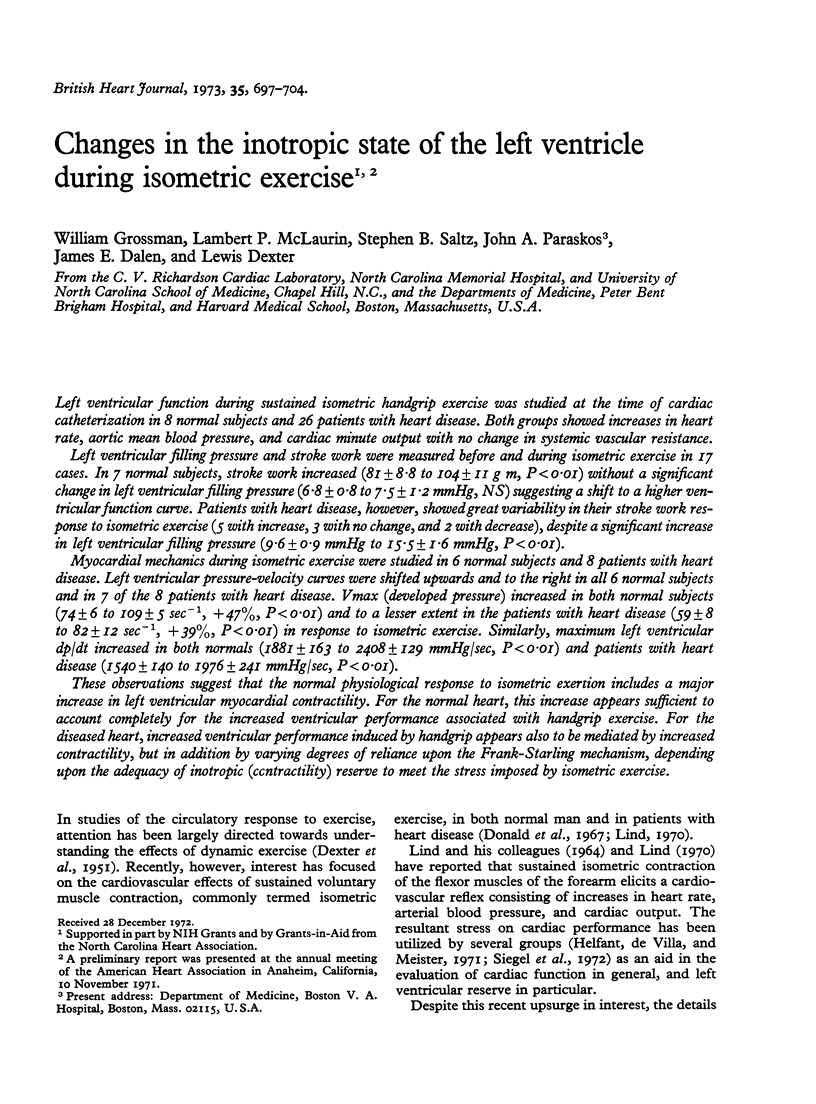
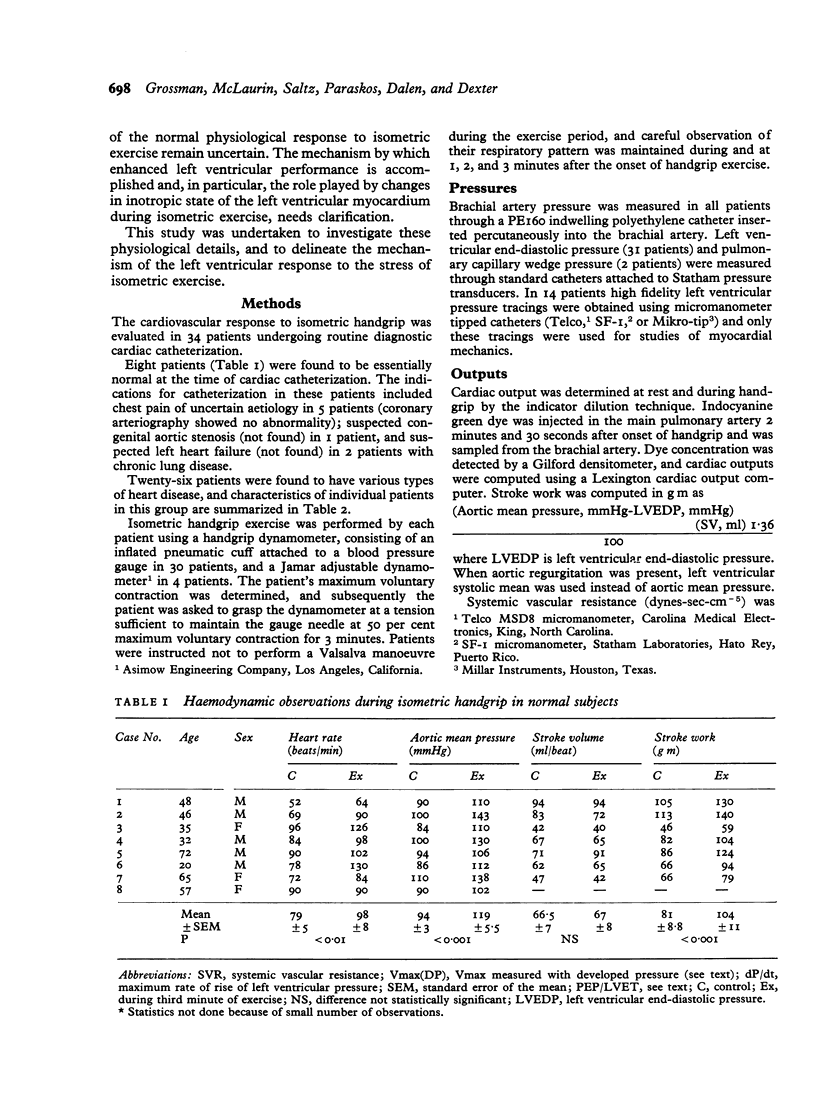
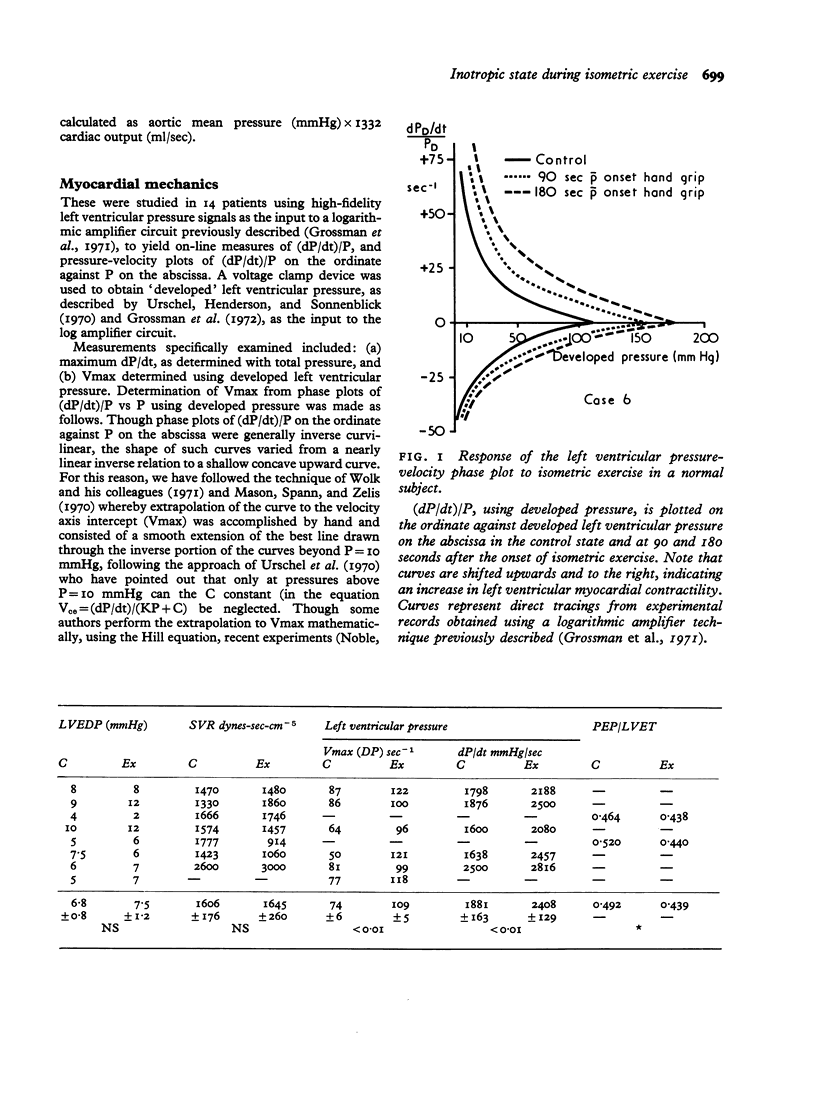
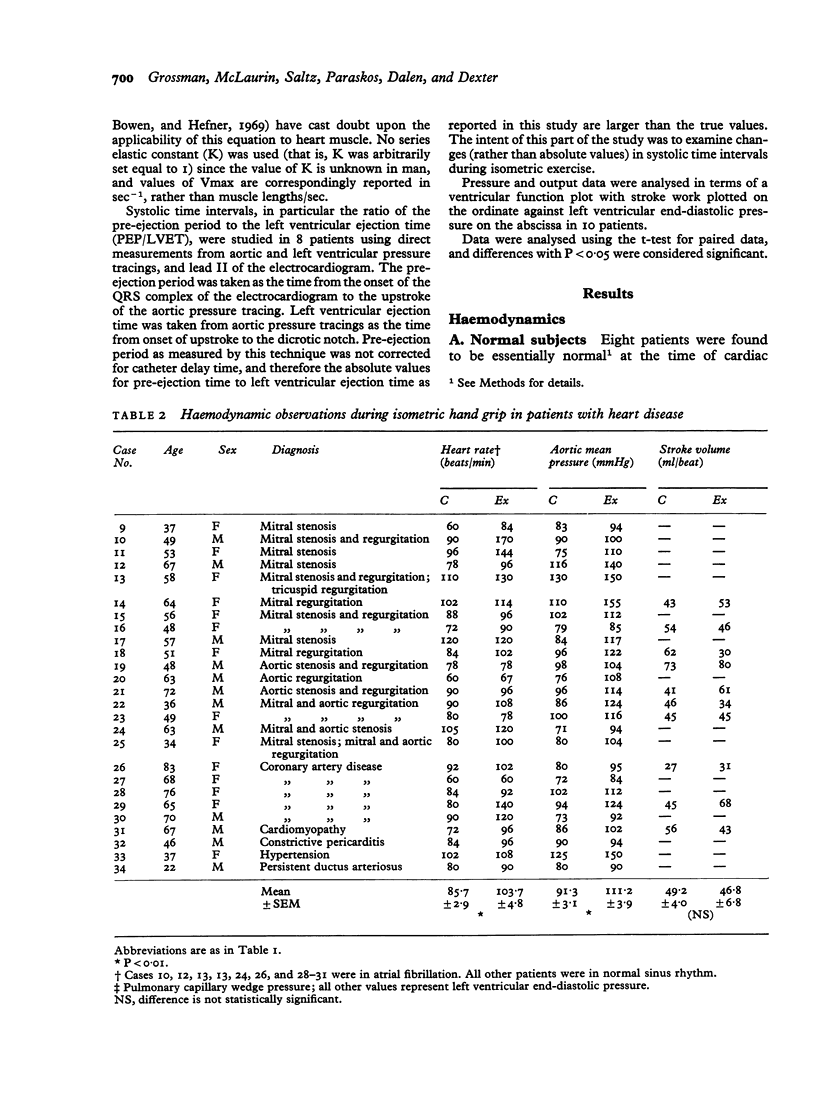
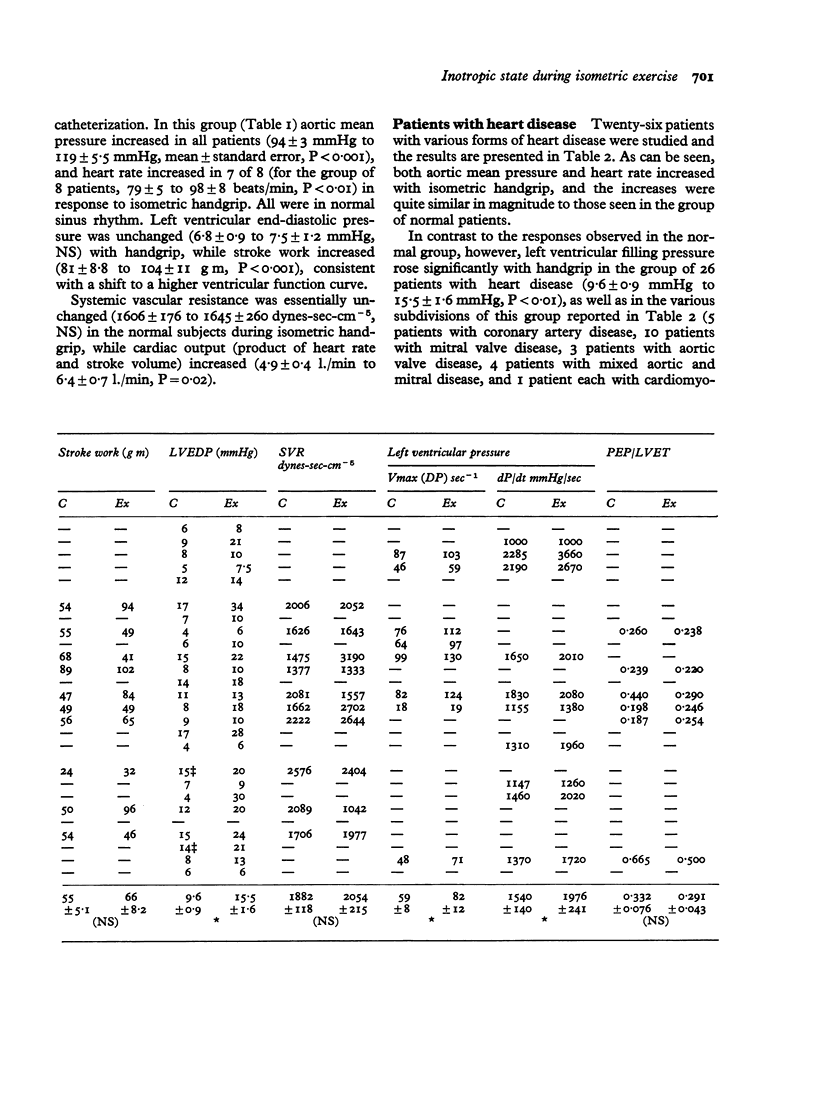
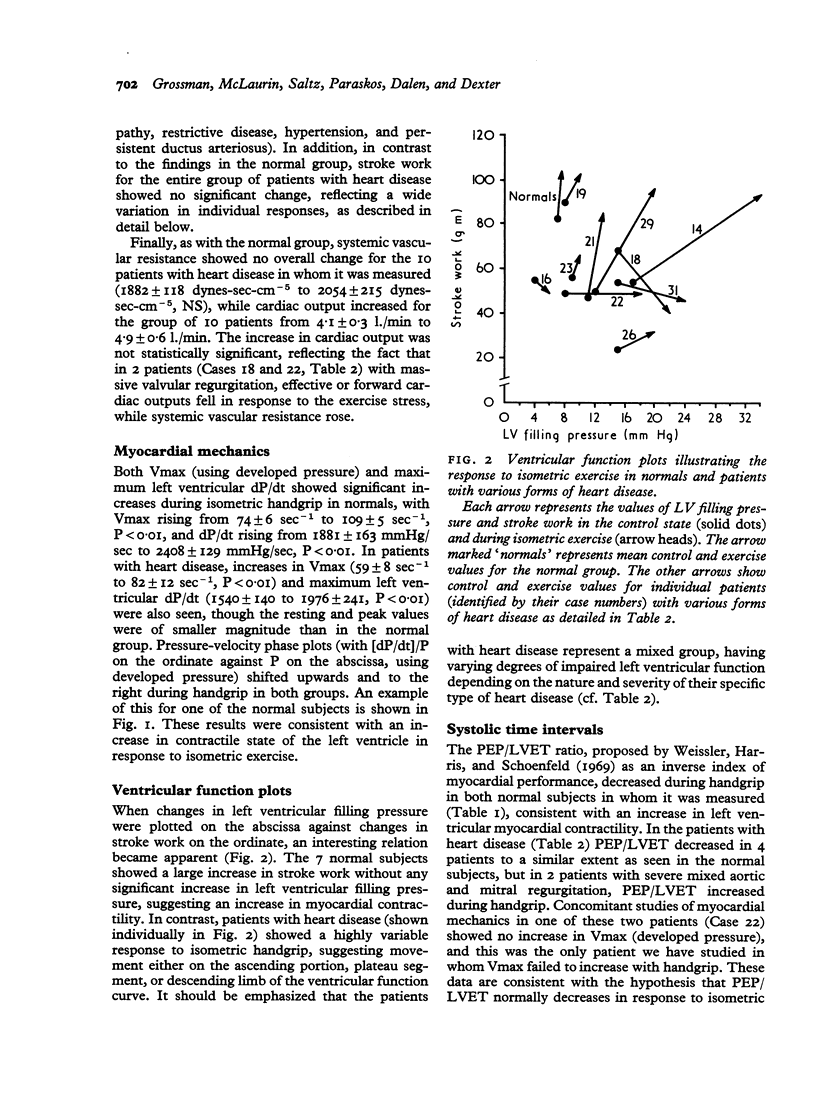

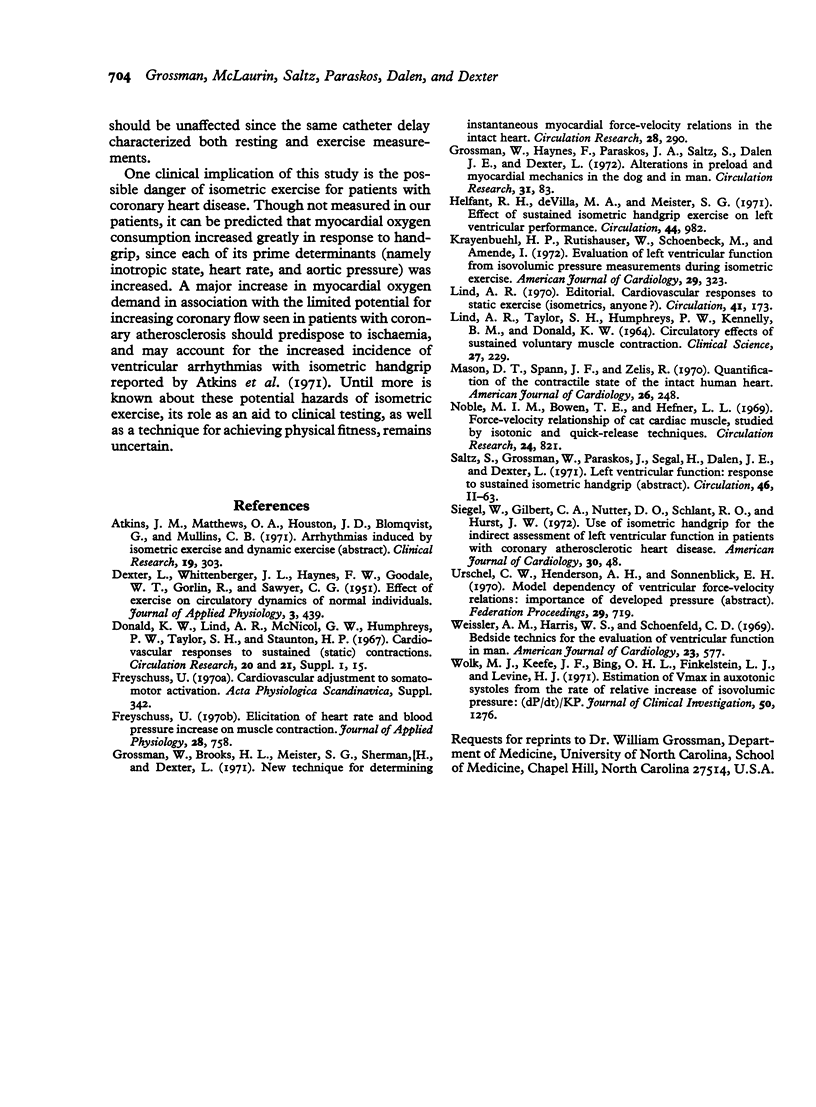
Selected References
These references are in PubMed. This may not be the complete list of references from this article.
- DEXTER L., WHITTENBERGER J. L., HAYNES F. W., GOODALE W. T., GORLIN R., SAWYER C. G. Effect of exercise on circulatory dynamics of normal individuals. J Appl Physiol. 1951 Feb;3(8):439–453. doi: 10.1152/jappl.1951.3.8.439. [DOI] [PubMed] [Google Scholar]
- Freyschuss U. Elicitation of heart rate and blood pressure increase on muscle contraction. J Appl Physiol. 1970 Jun;28(6):758–761. doi: 10.1152/jappl.1970.28.6.758. [DOI] [PubMed] [Google Scholar]
- Grossman W., Brooks H., Meister S., Sherman H., Dexter L. New technique for determining instantaneous myocardial force-velocity relations in the intact heart. Circ Res. 1971 Feb;28(2):290–297. doi: 10.1161/01.res.28.2.290. [DOI] [PubMed] [Google Scholar]
- Helfant R. H., De Villa M. A., Meister S. G. Effect of sustained isometric handgrip exercise on left ventricular performance. Circulation. 1971 Dec;44(6):982–993. doi: 10.1161/01.cir.44.6.982. [DOI] [PubMed] [Google Scholar]
- Krayenbuehl H. P., Rutishauser W., Schoenbeck M., Amende I. Evaluation of left ventricular function from isovolumic pressure measurements during isometric exercise. Am J Cardiol. 1972 Mar;29(3):323–330. doi: 10.1016/0002-9149(72)90526-7. [DOI] [PubMed] [Google Scholar]
- LIND A. R., TAYLOR S. H., HUMPHREYS P. W., KENNELLY B. M., DONALD K. W. THE CIRCULATIORY EFFECTS OF SUSTAINED VOLUNTARY MUSCLE CONTRACTION. Clin Sci. 1964 Oct;27:229–244. [PubMed] [Google Scholar]
- Lind A. R. Cardiovascular responses to static exercise. (Isometrics, anyone?). Circulation. 1970 Feb;41(2):173–176. doi: 10.1161/01.cir.41.2.173. [DOI] [PubMed] [Google Scholar]
- Mason D. T., Spann J. F., Jr, Zelis R. Quantification of the contractile state of the intact human heart. Maximal velocity of contractile element shortening determined by the instantaneous relation between the rate of pressure rise and pressure in the left ventricle during isovolumic systole. Am J Cardiol. 1970 Sep;26(3):248–257. doi: 10.1016/0002-9149(70)90791-5. [DOI] [PubMed] [Google Scholar]
- Noble M. I., Bowen T. E., Hefner L. L. Force-velocity relationship of cat cardiac muscle, studied by isotonic and quick-release techniques. Circ Res. 1969 Jun;24(6):821–833. doi: 10.1161/01.res.24.6.821. [DOI] [PubMed] [Google Scholar]
- Siegel W., Gilbert C. A., Nutter D. O., Schlant R. C., Hurst J. W. Use of isometric handgrip for the indirect assessment of left ventricular function in patients with coronary atherosclerotic heart disease. Am J Cardiol. 1972 Jul 11;30(1):48–54. doi: 10.1016/0002-9149(72)90124-5. [DOI] [PubMed] [Google Scholar]


